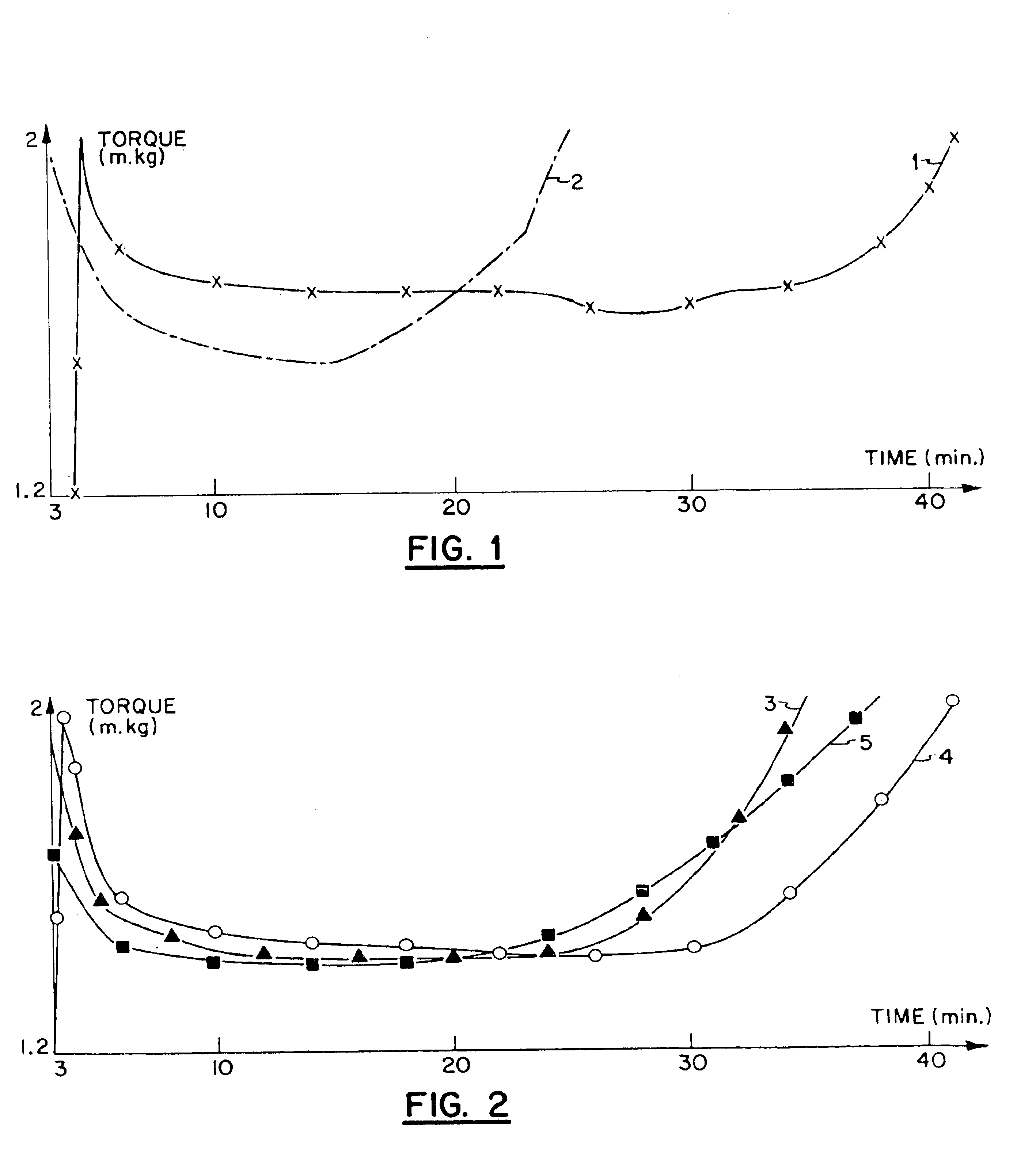Stabilization of vinyl halide polymers
- Summary
- Abstract
- Description
- Claims
- Application Information
AI Technical Summary
Problems solved by technology
Method used
Image
Examples
example i
[0086]Synthesis of mercaptoethyl stearate, CH3(CH2)16COOCH2CH2SH
[0087]A one liter capacity reactor equipped with a mechanically operated agitator, thermometer, water-cooled condenser and Dean-Stark trap was charged with 284 g. (1 mole) of stearic acid, 86 g. (1.1 mole) of 2-mercaptoethanol, 0.8 g. p-toluenesulfonic acid and 200 cc. of benzene. The contents of the reactor were heated to the boiling point for six hours under a nitrogen atmosphere, during which time the temperature of the liquid was maintained below 100° C. Following the addition of 200 cc. of benzene the reaction mixture was cooled to ambient temperature, at which time it extracted with two 200 cc. portion of water. The benzene and other volatiles were then evaporated under reduced pressure, leaving 30 g. of crude 2-mercaptoethyl stearate as a residue. This product was found to contain 9.2% by weight of mercapto (—SH) groups. The calculated value for the expected product is 9.6%.
example ii
[0088]Synthesis of 3-thioglyceryl myristate
[0089]The procedure described in Example I was repeated using 228 g. (1 mole) of myristic acid, 216 g. (2 moles) of 3-thioglycerol, 2 g. of p-toluenesulfonic acid and 500 cc. benzene. In this instance heating of the reaction mixture was discontinued when one mole of water was collected in the Dean-Stark trap. The reaction mixture was then extracted using 500 cc. portions of water. Evaporation of the benzene under reduced pressure yielded 322 g. of crude 3-thioglyceryl myristate. This material was found to contain 8.4% by weight of mercapto groups, compared with 10.4% for the expected product.
example iii
[0090]This example demonstrates that the addition of 2-mercaptoethyl stearate reduces the amount of a conventional organotin stabilizer required to impart the same level of heat stability to a vinyl chloride homopolymer.
[0091]A mixture having the following composition was blended on a roller mill heated to a temperature of 180° C. for a period of time specified in the accompanying Table I.[0092]100 parts of vinyl chloride homopolymer[0093](Lacvyl S / 071 / S, K value=56)[0094]0.5 part montan wax (E wax)[0095]Stabilizer as specified in Table I.
[0096]The stabilizer employed was di-n-octyltin-S, S-bis-(isooctyl mercaptoacetate) and the ester was 2-mercaptoethyl stearate (MES). The time interval (in minutes) between placing of the ingredients on the mill and a) observation of initial discoloration and b) degradation of the sample to a brown color are recorded in Table I.
[0097]
TABLE IDiscoloration% Tin Compound% MESInitialBrowning0.07—2′3′0.25—4′9′0.35—7′12′0.70—11′25′0.071.004′9′
[0098]The p...
PUM
| Property | Measurement | Unit |
|---|---|---|
| Fraction | aaaaa | aaaaa |
| Percent by mass | aaaaa | aaaaa |
| Temperature | aaaaa | aaaaa |
Abstract
Description
Claims
Application Information
 Login to View More
Login to View More - R&D Engineer
- R&D Manager
- IP Professional
- Industry Leading Data Capabilities
- Powerful AI technology
- Patent DNA Extraction
Browse by: Latest US Patents, China's latest patents, Technical Efficacy Thesaurus, Application Domain, Technology Topic, Popular Technical Reports.
© 2024 PatSnap. All rights reserved.Legal|Privacy policy|Modern Slavery Act Transparency Statement|Sitemap|About US| Contact US: help@patsnap.com










